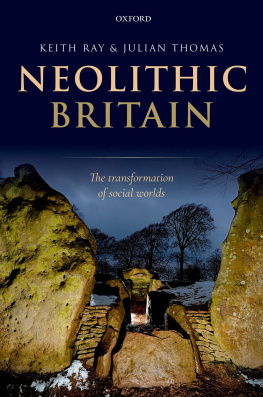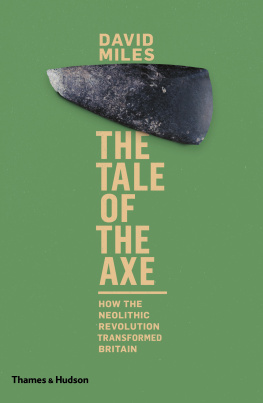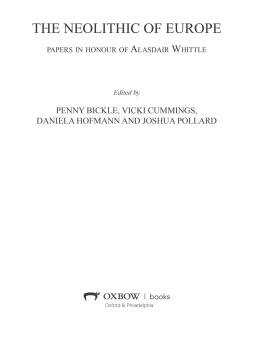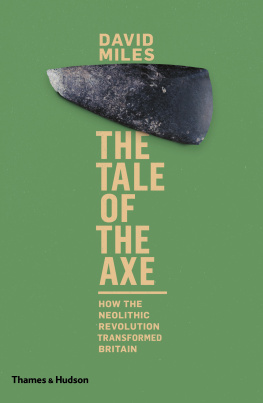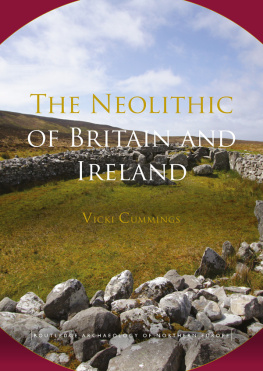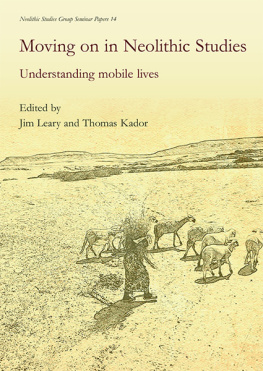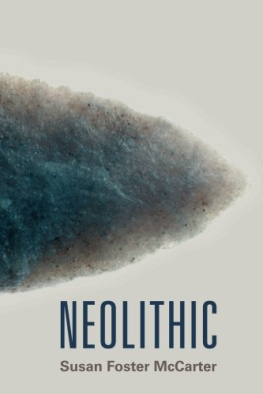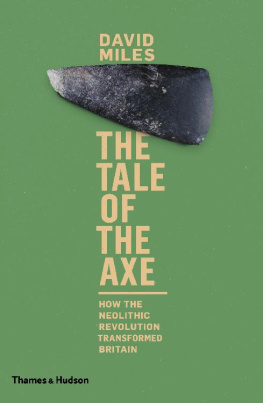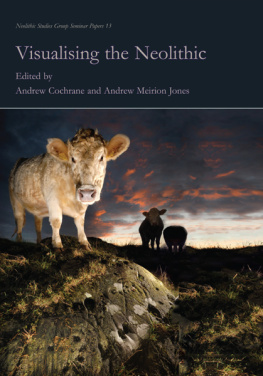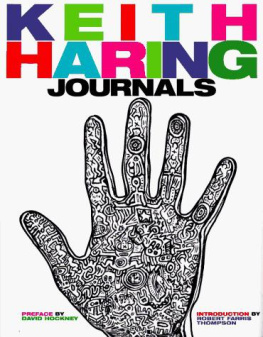Ray Keith - Neolithic Britain
Here you can read online Ray Keith - Neolithic Britain full text of the book (entire story) in english for free. Download pdf and epub, get meaning, cover and reviews about this ebook. year: 2018, publisher: Oxford University Press, genre: Religion. Description of the work, (preface) as well as reviews are available. Best literature library LitArk.com created for fans of good reading and offers a wide selection of genres:
Romance novel
Science fiction
Adventure
Detective
Science
History
Home and family
Prose
Art
Politics
Computer
Non-fiction
Religion
Business
Children
Humor
Choose a favorite category and find really read worthwhile books. Enjoy immersion in the world of imagination, feel the emotions of the characters or learn something new for yourself, make an fascinating discovery.
- Book:Neolithic Britain
- Author:
- Publisher:Oxford University Press
- Genre:
- Year:2018
- Rating:3 / 5
- Favourites:Add to favourites
- Your mark:
- 60
- 1
- 2
- 3
- 4
- 5
Neolithic Britain: summary, description and annotation
We offer to read an annotation, description, summary or preface (depends on what the author of the book "Neolithic Britain" wrote himself). If you haven't found the necessary information about the book — write in the comments, we will try to find it.
Neolithic Britain — read online for free the complete book (whole text) full work
Below is the text of the book, divided by pages. System saving the place of the last page read, allows you to conveniently read the book "Neolithic Britain" online for free, without having to search again every time where you left off. Put a bookmark, and you can go to the page where you finished reading at any time.
Font size:
Interval:
Bookmark:


Great Clarendon Street, Oxford, ox2 6dp , United Kingdom
Oxford University Press is a department of the University of Oxford. It furthers the Universitys objective of excellence in research, scholarship, and education by publishing worldwide. Oxford is a registered trade mark of Oxford University Press in the UK and in certain other countries
Keith Ray and Julian Thomas 2018
The moral rights of the author have been asserted
First Edition published in 2018
Impression: 1
All rights reserved. No part of this publication may be reproduced, stored in a retrieval system, or transmitted, in any form or by any means, without the prior permission in writing of Oxford University Press, or as expressly permitted by law, by licence or under terms agreed with the appropriate reprographics rights organization. Enquiries concerning reproduction outside the scope of the above should be sent to the Rights Department, Oxford University Press, at the address above
You must not circulate this work in any other form and you must impose this same condition on any acquirer
Published in the United States of America by Oxford University Press 198 Madison Avenue, New York, NY 10016, United States of America
British Library Cataloguing in Publication Data
Data available
Library of Congress Control Number: 2018935372
ISBN 9780198823896
ebook ISBN 9780192559432
Printed and bound by CPI Group (UK) Ltd, Croydon, cr 0 4 yy
Links to third party websites are provided by Oxford in good faith and for information only. Oxford disclaims any responsibility for the materials contained in any third party website referenced in this work.
This book is dedicated to the memory of
Andrew Sherratt (19462006)
Former Assistant Keeper of Antiquities at the Ashmolean Museum, and Professor of Archaeology at the Universities of Oxford and Sheffield
An original thinker, scholar, and prehistorian
This wonderful book is published in 2018, at a time when Britain is convulsed over questions of identity, trying to forge a sustainable future whilst faced with alarming anxieties and insecurities. And here are these two eloquent men, Ray and Thomas, mining our deep history and finding evidence of migrations and climate change, trade routes and new technologies, new patterns of food and farming, clear practices of government and belief. Neolithic Britain suddenly seems thrillingly familiar.
Time is the great theme of the book. We begin to understand not only how we might see our modern world in the context of a society that evolved between six and four thousand years ago, but also, and spectacularly, how those ancestors might have understood and celebrated their own sense of the past. The authors convey brilliantly the ways in which memory and commemoration are captured in the life of household objects, rituals, and architecture.
Theres a joy in finding history told here not by the victors but by the scientists and the storytellers. For this lay reader, one of the pleasures of the book is howat a fingertip levelthese archaeologists work, and the sophistication with which modern technology helps them clarify what they find. This pleasure is redoubled by the dialogue that ensues about interpretation. In the dynamic exchange of ideas Ray and Thomas keep the past with us, part of our contemporary reality.
Theres a delightful irony in the way this is the written history that itself was a technology unavailable to the people whose story they tell. The books illustrations and photographs serve as vivid representation of the objects and artefacts and traces of lives that unearth their truths. At best, it gives the reader not the results of Ray and Thomass archaeology, but the experience of being part of their excavations and discoveries.
Theres a nagging sense, though, whether you have dipped into this book over months or wolfed it at one sitting, that it isnt the last word on the subject. Rather, it feels like the starting point for a conversation about who we are. Its a conversation with two exceptional guides who inform our understanding of humanity through their curiosity about the nature of evidence and their reading of stone, and land, and water. Its the story of civilization.
Peter Florence
Director,
Hay Festival
This book has arisen from conversations between the co-authors about both archaeology and Neolithic studies over the course of three decades, starting in 1987 when we both found ourselves on the staff of the then St Davids University College (University of Wales), Lampeter. These talks have been sustained at intervals, but each of us has also benefited from discussions with many other people who, like us, have become absorbed in the study of the Neolithic of Britain and Europe. We first developed the idea of writing this book as a joint project in 2009, embarking in earnest upon the enterprise in 2014. We would like to acknowledge here with thanks those individual scholars, field archaeologists, and scientific specialists who have had relevant conversations with one or other of us, and who have in many cases provided key insights and have shared information. The list is long, and includes: Mike Allen, Hugo Anderson-Whymark, Martyn Barber, Alistair Barclay, Gordon Barclay, John Barrett, Lara Bishop, Richard Bradley, Bill and Jenny Britnell, Marcus Brittain, Kenny Brophy, Nick Card, Andrew Chamberlain, Chantal Conneller, Gabriel Cooney, Vicki Cummings, Timothy Darvill, Ruth van Dyke, Mark Edmonds, Andrew Fleming, Tony Fleming, Chris Fowler, Irene Garcia Rovira, Julie Gardiner, Duncan Garrow, Paul Garwood, Alex Gibson, Seren Griffiths, Oliver Harris, Frances Healy, Gill Hey, Ian Hodder, Tim Hoverd, Robin Jackson, Mats Larsson, Matt Leivers, Gavin Lucas, Lesley McFadyen, Jackie McKinley, Koji Mizoguchi, Jenny Moore, Jacqui Mulville, Nick Overton, Stuart Palmer, Mike Parker Pearson, Rick Peterson, Josh Pollard, Ffion Reynolds, Colin Richards, John Robb, Chris Scarre, Niall Sharples, the late Ian Shepherd, Alison Sheridan, Adam Stanford, Anne Teather, Christopher Tilley, Kate Welham, Alasdair Whittle, and Ann Woodward.
We are grateful to all those who have provided, or who have helped to source, illustrations for the book. Appropriate credits are given in the captions and/or the illustrations list. However, we would especially like to thank Richard Scott Jones for pre-publication images, and Aaron Watson and Tim Hoverd for archaeological drawings and reconstructions. The artist Anna Dillon, wood-engraver Hilary Paynter, and photographer Adam Stanford have been outstandingly generous in permitting us to use examples of their work to enliven the book visually. We thank the editorial and production team at Oxford University Press, and especially Charlotte Loveridge, for their painstaking efforts and their support in seeing the book through to print.
We would like to take this opportunity to thank Peter Florence for accomplishing two things for us. First, for his test-driving of the manuscript prior to publication; and secondly for his agreement to write a Foreword with which to launch the book from the perspective of someone who, though not a professional historian or archaeologist, nonetheless has a keen sense of both history and historicity in our own times, and their value to a society that still sometimes struggles with a non-pecuniary sense of the importance of history or literary culture.
We want, of course, to take this opportunity to express our gratitude for the forbearance of Catherine, Morag, Rowan, Anna, Lucie, Sophie, Anna, Robin, and Dylan, in our respective families, during the long haul of production of yet another archaeology book.
Font size:
Interval:
Bookmark:
Similar books «Neolithic Britain»
Look at similar books to Neolithic Britain. We have selected literature similar in name and meaning in the hope of providing readers with more options to find new, interesting, not yet read works.
Discussion, reviews of the book Neolithic Britain and just readers' own opinions. Leave your comments, write what you think about the work, its meaning or the main characters. Specify what exactly you liked and what you didn't like, and why you think so.

